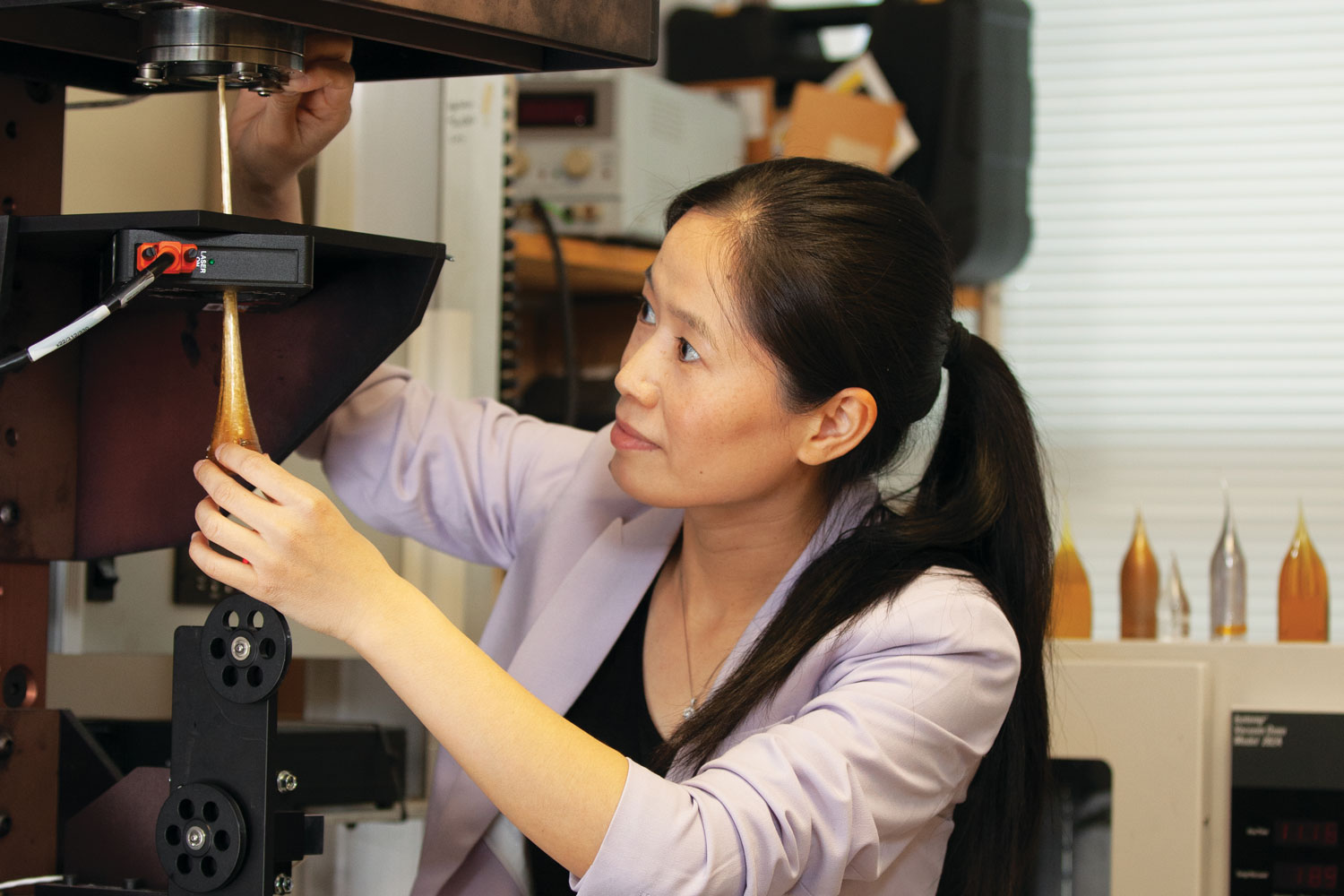Xiaoting Jia wins CAREER award to develop bio-friendly brain implants

As brain science advances, researchers are refining their maps of the brain’s twisting neural passages. But many functional networks remain elusive. What causes brain-related diseases like Parkinson’s, autism, and Alzheimer’s? How can we prevent them or mitigate their affects?
Neural implant devices are helping researchers answer these questions, but progress has been slowed by the engineering challenge of creating a deep brain neural interface that matches the brain’s complexity.
Rising to the challenge, Xiaoting Jia, an assistant professor in the Bradley Department of Electrical and Computer Engineering, has been awarded a National Science Foundation Faculty Early CAREER Award to develop a multifunctional neural interface device that is highly flexible, scalable, clinically translatable, and bio-friendly.
As the technology has evolved in recent years, microelectrode sensors have given researchers a direct channel for recording and affecting brain activity. Newer generations of neural interface devices are increasingly sophisticated, according to Jia. They feature improved spatial resolution and can sense and stimulate across more electrode channels.
“But metrics like functionality and bio-friendliness are hard to achieve and scale at the same time on current device platforms,” said Jia. “This is where we are focusing.”
Multifunctional and bio-friendly
Multifunctional devices can switch specific neurons off and on, and they can modulate local biochemical environments and activities. But what qualifies a neural implant as bio-friendly?
According to Jia, bio-friendly devices are flexible and biocompatible, can be produced cost-effectively in large quantities for experimentation, and translate easily to the human brain.
Flexible and biocompatible
To assimilate gently into delicate brain tissue, an implant must be supple and responsive. A flexible implant minimizes tissue damage and any chance of probe misplacement or device failure. To achieve this quality, Jia and her team are developing electrode probes made out of polymers and carbon nanomaterials — highly flexible interfaces, ideal for stimulating and recording neurons.
These materials are also biocompatible, which means they minimize scarring and neuron death, and are more chemically stable than silicon or other low-melting-point metals that are used in existing multielectrode sensors.
Scalable and translatable
To create scalable devices, Jia’s team is using a technique called fiber drawing, which allows them to integrate optical, electrical, and other features into a single fiber. They start with a hand-sized version of the probe — called a macroscopic preform — that contains carbon-based electrodes, along with several other features.
After carefully heating the preform, the researchers stretch it from a tall tower (a fiber drawing tower), which pulls the preform into a long, thin strand. During the thermal drawing, the carbon nanofibers line up lengthwise within the strand, which improves the electrical conductivity while still maintaining flexibility and biocompatibility.
The probes themselves come from thin, cross-sectional slices of the strand, which contain nano-sized versions of the original features.
“For the first time, we can fabricate aligned carbon nanofiber-based electrodes inside polymer fibers in a scalable manner, and potentially use that as miniaturized neural recording devices without sacrificing conductivity,” said Jia.
Because the fiber drawing method continuously draws fiber strands containing electrodes and other functional components, electrodes can easily extend to larger lengths, Jia added. “This is a key step for moving from small animal tests to human clinical trials.”
Collaboration and impact
Jia and her team will be working with neuroscientists and chemical engineers to put these devices to work treating brain-related diseases. Her collaborators include Rong Tong, an assistant professor in the Department of Chemical Engineering; Michael Fox, an assistant professor and the director of the Center for Neurobiology Research at the Fralin Biomedical Research Institute; and Dr. Mark Witcher, a neurosurgeon at Carilion Clinic.
Jia will also be collaborating with Professor Harald Sontheimer’s team in the Fralin Biomedical Research Institute at VTC, where they plan to use the neural devices to investigate different intervention strategies for epileptic seizure in mice.
Sontheimer is the director of the Center for Glial Biology in Health, Disease, and Cancer in the Fralin Biomedical Research Institute and the executive director of the School of Neuroscience in the Virginia Tech College of Science.
“The multifunctional fiber probe provides us with a powerful tool for studying and treating tumors,” Jia said. “Not only does it provide an ideal drug delivery path, but it also allows for real-time monitoring and assessment of tumor characteristics.”
Outreach and education
Biomedical device design projects will be incorporated into undergraduate base courses and students will showcase their work to K–12 classes. Jia’s team will also be collaborating with Virginia Tech’s Institute for Creativity, Arts, and Technology and Center for the Enhancement of Engineering Diversity to introduce biomedical devices and nanotechnology to children of all ages.
The project will clear the path for the next generation of neuro researchers and the next generation of neural interface devices.







